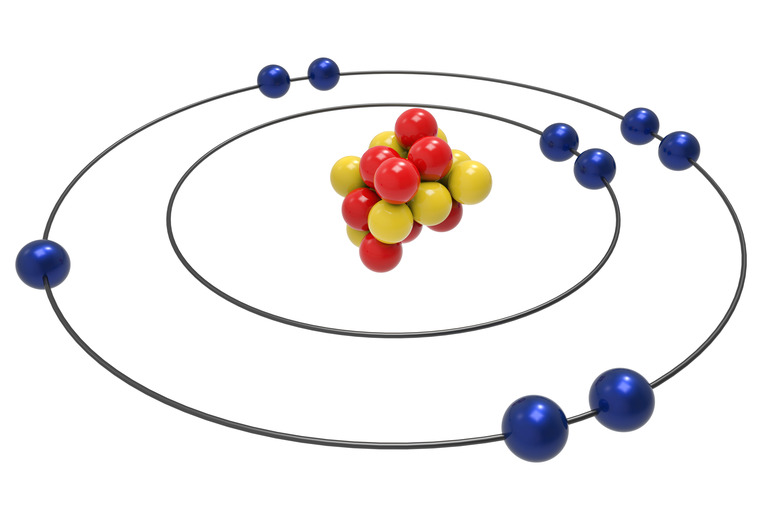How To Calculate The First Ionization Energy Of The Hydrogen Atom Related To The Balmer Series
The Balmer series is the designation for the spectral lines of emissions from the hydrogen atom. These spectral lines (which are photons emitted in the visible-light spectrum) are produced from the energy required to remove an electron from an atom, called ionization energy. Since the hydrogen atom only has one electron, the ionization energy required to remove this electron is called the first ionization energy (and for hydrogen, there is no second ionization energy). This energy can be calculated in a series of short steps.
Step 1
Determine the initial and final energy states of the atom and find the difference of their inverses. For the first ionization level, the final energy state is infinity (since the electron is removed from the atom), so the inverse of this number is 0. The initial energy state is 1 (the only energy state the hydrogen atom can have) and the inverse of 1 is 1. The difference between 1 and 0 is 1.
Step 2
Multiply the Rydberg constant (an important number in atomic theory), which has a value of 1.097 x 10^(7) per meter (1/m) by the difference of the inverse of the energy levels, which in this case is 1. This gives the original Rydberg constant.
Step 3
Calculate the inverse of result A (that is, divide the number 1 by result A). This gives 9.11 x 10^(-8) m. This is the wavelength of the spectral emission.
Step 4
Multiply Planck's constant by the speed of light, and divide the result by the wavelength of the emission. Multiplying Planck's constant, which has a value of 6.626 x 10^(-34) Joule seconds (J s) by the speed of light, which has a value of 3.00 x 10^8 meters per second (m/s) gives 1.988 x 10^(-25) Joule meters (J m), and dividing this by the wavelength (which has a value of 9.11 x 10^(-8) m) gives 2.182 x 10^(-18) J. This is the first ionization energy of the hydrogen atom.
Step 5
Multiply the ionization energy by Avogadro's number, which gives the number of particles in a mole of substance. Multiplying 2.182 x 10^(-18) J by 6.022 x 10^(23) gives 1.312 x 10^6 Joules per mol (J/mol), or 1312 kJ/mol, which is how it is commonly written in chemistry.
Cite This Article
MLA
Bourdin, Thomas. "How To Calculate The First Ionization Energy Of The Hydrogen Atom Related To The Balmer Series" sciencing.com, https://www.sciencing.com/calculate-atom-related-balmer-series-8646484/. 13 March 2018.
APA
Bourdin, Thomas. (2018, March 13). How To Calculate The First Ionization Energy Of The Hydrogen Atom Related To The Balmer Series. sciencing.com. Retrieved from https://www.sciencing.com/calculate-atom-related-balmer-series-8646484/
Chicago
Bourdin, Thomas. How To Calculate The First Ionization Energy Of The Hydrogen Atom Related To The Balmer Series last modified March 24, 2022. https://www.sciencing.com/calculate-atom-related-balmer-series-8646484/
